It’s that time of year again when Samsung unveils its latest lineup of flagship smartphones. As expected, this year’s Galaxy S23 models follow closely in the footsteps of their respective S22 predecessors.
- Galaxy S23 vs. Galaxy S23 Ultra: specs
- Galaxy S23 vs. Galaxy S23 Ultra: design and display
- Galaxy S23 vs. Galaxy S23 Ultra: performance and battery
- Galaxy S23 vs. Galaxy S23 Ultra: cameras
- Galaxy S23 vs. Galaxy S23 Ultra: software and updates
- Galaxy S23 vs. Galaxy S23 Ultra: special features
- Galaxy S23 vs. Galaxy S23 Ultra: price and availability
- Overall winner: Samsung Galaxy S23 Ultra
Interestingly, the changes across the board this year are considerably more iterative — a good sign that Samsung’s S-series lineup has reached a certain maturity. For the most part, Samsung’s top-of-the-line smartphones aren’t bringing any groundbreaking new features or major camera changes this year. Instead, the focus is on smaller quality-of-life improvements that result in the S23 models refining Samsung’s approach to its high-end smartphones rather than redefining it.
As with past years, there’s something for everyone among the S23 models, from the pocketable Galaxy S23 to the super powerful Galaxy S23 Ultra. While it’s tempting to jump right to Samsung’s premium S23 Ultra, you might be surprised by what the more affordable S23 has to offer.
Galaxy S23 vs. Galaxy S23 Ultra: specs
| Samsung Galaxy S23 | Samsung Galaxy S23 Ultra | |
| Size | 146.3 x 70.9 x 7.62 mm (2.79 x 5.76 x 0.3 inches) | 157.7 x 78 x 8.9 mm (3.07 x 6.43 x 0.35 inches) |
| Weight | 168 grams (5.93 ounces) | 234 grams (8.25 ounces) |
| Screen size | 6.1-inch Dynamic AMOLED 2X | 6.8-inch Dynamic AMOLED 2X |
| Screen resolution | FHD+ at 425 pixels per inch | QHD+ at 550 pixels per inch |
| Operating system | Android 13 with One UI 5.1 | Android 13 with One UI 5.1 |
| Storage | 128GB, 256GB | 256GB, 512GB, 1TB |
| MicroSD card slot | No | No |
| Tap-to-pay services | Google Pay, Samsung Pay | Google Pay, Samsung Pay |
| Processor | Snapdragon 8 Gen 2 for Galaxy | Snapdragon 8 Gen 2 for Galaxy |
| RAM | 8GB | 8GB, 12GB |
| Cameras | Rear: 50-megapixel (MP) primary, 12MP ultrawide, and 10MP telephoto
Front: 12MP |
Rear: 200MP primary with Laser Auto Focus, 12MP ultrawide, and 10MP telephoto
Front: 12MP |
| Video | Rear: Up to 8K at 30 frames per second (fps), 4K at 60 fps, FHD at 120 fps, and 960 fps for slow motion
Front: Up to 4K at 60 fps |
Rear: Up to 8K at 30 frames per second (fps), 4K at 60 fps, FHD at 120 fps, and 960 fps for slow motion
Front: Up to 4K at 60 fps |
| Bluetooth | Yes | Yes |
| Ports | USB-C | USB-C |
| Biometrics | Ultrasonic in-display fingerprint sensor and Face Recognition | Ultrasonic in-display fingerprint sensor and Face Recognition |
| Water resistance | IP68 | IP68 |
| Battery | 3,900mAh Super Fast Charging at 25W Fast Wireless Charging 2.0 Wireless PowerShare |
5,000mAh Super Fast Charging 2.0 at 45W Fast Wireless Charging 2.0 Wireless PowerShare |
| App marketplace | Google Play Store | Google Play Store |
| Network support | 5G mmWave | 5G mmWave |
| Colors | Phantom Black, Cream, Green, and Lavender | Phantom Black, Cream, Green, and Lavender |
| Price | From $799 | From $1,199 |
| Available from | Samsung | Samsung |
| Review | S23 hands-on | S23 Ultra Review |
Galaxy S23 vs. Galaxy S23 Ultra: design and display

The difference in size is the most obvious characteristic setting the Galaxy S23 and Galaxy S23 Ultra apart. With a 6.1-inch edge-to-edge screen, the S23 is definitely more svelte than the phablet-like S23 Ultra, which has a 6.8-inch display and a design that clearly shows its roots in the Galaxy Note era.
However, don’t make the mistake of thinking that just because the S23 has a smaller display that its quality is inferior to the screen of the S23 Ultra. Bigger isn’t always better, and in this case, both phones feature the same Dynamic AMOLED 2X screen. The S23 Ultra gets more pixels since it’s larger, although it’s worth noting it does have a higher pixel density — 500 pixels per inch (ppi) versus the Galaxy S23’s 425. This means things may look a bit crisper on the Galaxy S23 Ultra, but one can also make the argument that this is more important on the larger screen.
The Galaxy S23 and S23 Ultra are also on the same level when it comes to durability. Both feature an IP68 water-resistance rating with Samsung’s latest Armor Aluminum chassis and Corning’s Gorilla Glass Victus 2 on both the front and back — an improvement that Corning promises will offer better drop protection should your phone happen to land on a rough surface like concrete.
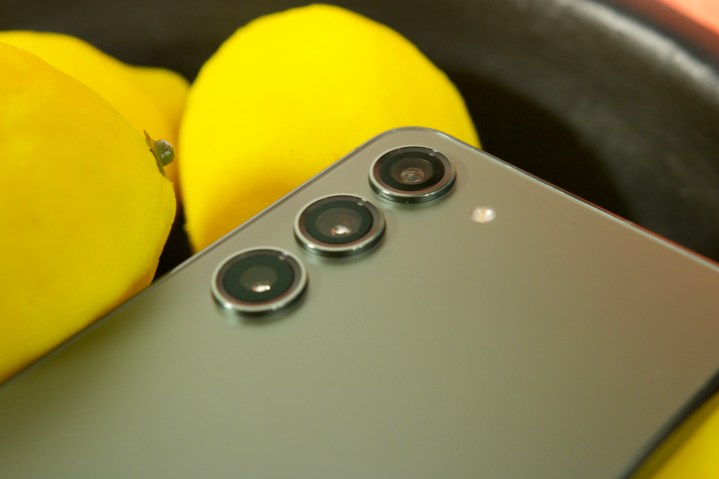
This year, Samsung has made an interesting design choice on the other side of the Galaxy S23. The camera bump that graced the back of the Galaxy S22 and prior models has vanished; instead, you get three slightly protruding lenses that match the cleaner and more minimalist style of the Galaxy Ultra.
The redesign may not be everyone’s cup of tea, but it’s definitely a welcome change for those who prefer the more uniform look of the Galaxy Ultra. In the end, since both size and design are subjective choices, we’re calling this one a tie.
Winner: Tie
Galaxy S23 vs. Galaxy S23 Ultra: performance and battery
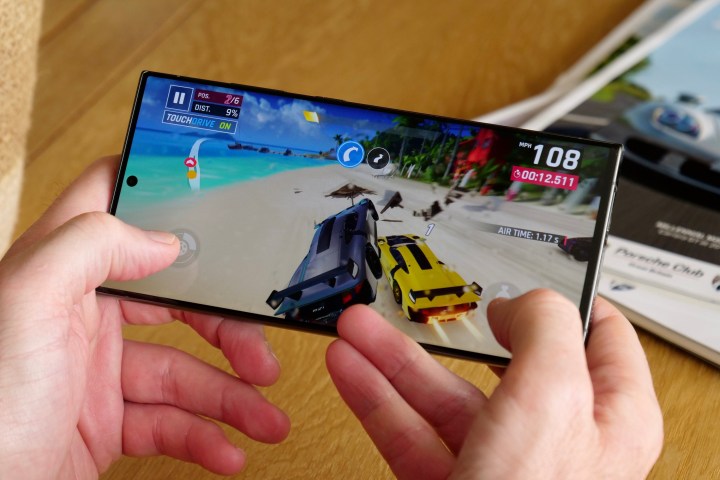
The Galaxy S23 lineup is powered by a new processor — Qualcomm’s Snapdragon 8 Gen 2. However, this year Samsung has added an extra twist; rather than going with an off-the-shelf version of Qualcomm’s latest system on a chip (SoC), Samsung has partnered with the chipmaker to create a bespoke version that it’s calling the “Snapdragon 8 Gen 2 Mobile Platform for Galaxy.”
This gives the Galaxy S23 models an impressive performance boost over their rivals’ similarly equipped flagships. We were unable to find anything the S23 Ultra couldn’t handle in our Galaxy S23 Ultra review, and there’s no reason to believe the standard S23 will be any slower since it uses the same chip.
The Galaxy S23 Ultra gets a slight edge by offering a version with 12GB of RAM — 50% more than the 8GB found in the Galaxy S23, but you’ll have to opt for 512GB or 1TB storage to get that. The 256GB Galaxy S23 Ultra has the same 8GB as its smaller counterpart and will likely deliver the same performance.
However, battery life is another matter. A bigger phone means room for a larger battery, and the 5,000mAh cell on the Galaxy S23 Ultra delivers significantly more capacity than the 3,900mAh found on the Galaxy S23. Of course, the S23 Ultra needs that to power a larger screen, but its endurance is still outstanding. With moderate use, the S23 Ultra can easily last for two days on a single charge. While the Galaxy S23 offers some slight battery improvements over last year’s Galaxy S22, it’s pretty clear that the Galaxy S23 Ultra still offers the best battery life of the pack.
It’s also worth mentioning that the Galaxy S23 remains limited to Samsung’s 25-watt first-generation Super Fast Charging spec. The Galaxy S23 Ultra is capable of 45W charging, meaning it not only runs longer, but you can also top it up more quickly. No models of the S23 come with a charger in the box.
Winner: Galaxy S23 Ultra
Galaxy S23 vs. Galaxy S23 Ultra: cameras
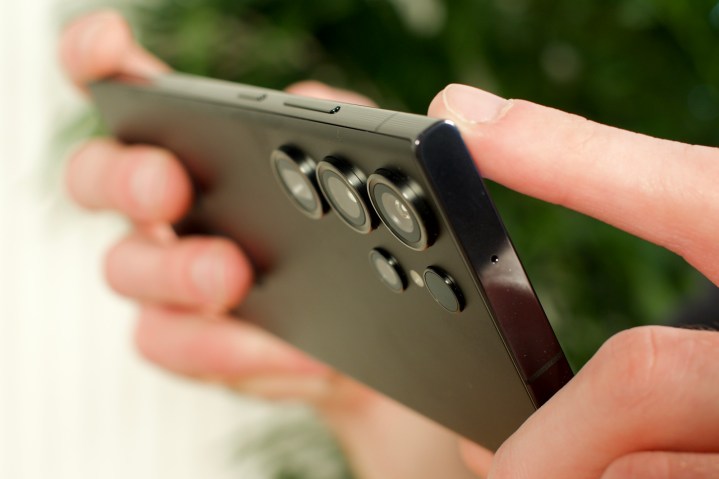
Over the past few years, the trend has been to define a premium flagship smartphone by its camera system, and the Galaxy S23 Ultra continues this trend by offering some of the best cameras you’ll find in a smartphone. It’s the one area in which Samsung’s most expensive model is leaps and bounds ahead of its siblings.
That’s not to say that the Galaxy S23 doesn’t have a very capable set of cameras. Samsung thankfully ditched its oddball 64-megapixel (MP) telephoto and 12MP main lens combo last year in the Galaxy S22, opting instead for a proper 3X optical zoom on the telephoto side and a more traditional 50MP primary sensor. The improvement was noticeable, and the Galaxy S23 retains that configuration.
Unfortunately, the key word here is “retains.” The Galaxy S23 doesn’t appear to have upped its camera game in any meaningful way. While the new Snapdragon 8 Gen 2 chip will likely power more advanced computational photography features to produce better results — the S23 and S23 Ultra offer the same imaging capabilities on the software side — the raw camera specs are mostly identical to what came last year. The only noticeable change is that the selfie camera gets a slight boost up to a 12MP sensor.
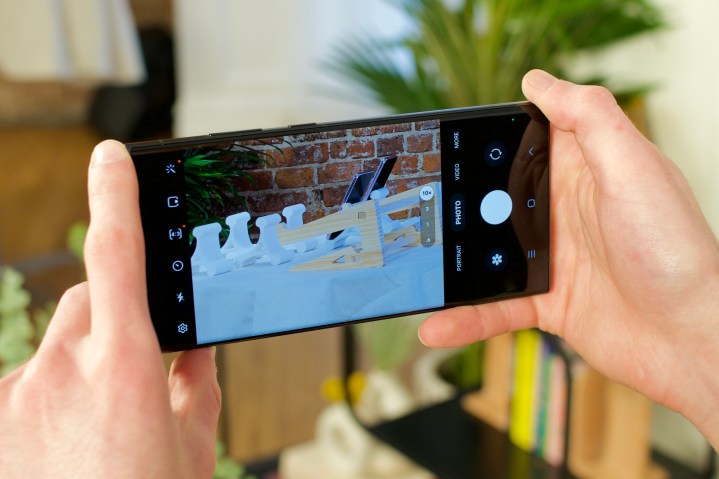
Meanwhile, the Galaxy S23 Ultra now packs in a 200MP sensor — nearly double the 108MP sensor from last year’s S22 Ultra. Of course, that doesn’t mean you’ll be taking photos at this resolution — at least not normally. As usual, Samsung’s camera software will use pixel binning to produce significantly better-quality photos at standard resolutions. You also get Samsung’s Laser Autofocus Sensor, which remains exclusive to the Ultra model. And while the S23 is limited to a max zoom range of 30x, the S23 Ultra can go all the way up to 100x.
Either way, when it comes to photography, it’s no contest between the Galaxy S23 and the Galaxy S23 Ultra. Casual photographers won’t be disappointed by the camera system in the Galaxy S23, but if you’re looking to take the best photos possible on a smartphone, there’s no question that you need to go with the Galaxy S23 Ultra, which offers incredible zoom capabilities thanks to its dual-telephoto lens system.
Winner: Galaxy S23 Ultra
Galaxy S23 vs. Galaxy S23 Ultra: software and updates
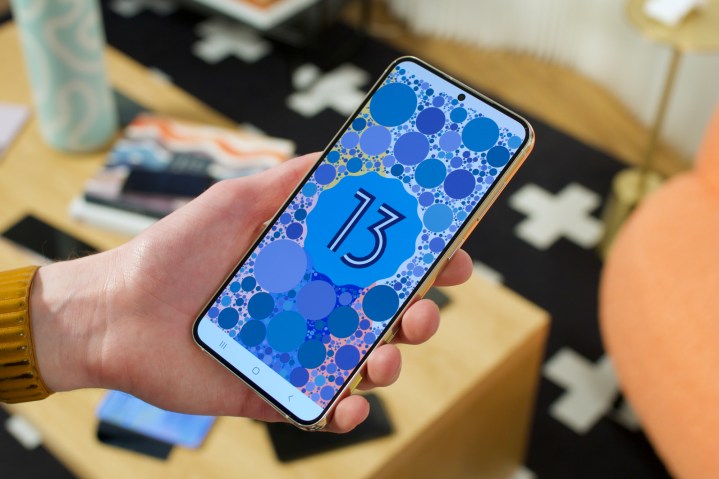
The Galaxy S23 and Galaxy S23 Ultra both ship with Android 13, and will be the first phones to get Samsung’s latest OneUI 5.1. This means that other than features specifically tied to hardware, such as the S-Pen and the more advanced camera system on the S23 Ultra, both models should provide the same software user experience.
More significantly, Samsung now promises four major Android OS updates and five years of security patches. This means that both the Galaxy S23 and Galaxy S23 Ultra should remain in lockstep all the way to Android 17. Since they have the same processor inside, there’s also no reason to believe either one will be left behind on performance as later Android updates are released. That’s especially important for the Galaxy S23 Ultra as it’s so far ahead of the curve on performance and technology you could easily be happily using it for years to come.
Winner: Tie
Galaxy S23 vs. Galaxy S23 Ultra: special features

Other than the camera system, one of the most significant differences between the Galaxy S23 and the Galaxy S23 Ultra is support for Samsung’s S Pen. Since the Galaxy Ultra series is an evolution of the Galaxy Note, Samsung has maintained support for its stylus, and as with last year’s Galaxy S22 Ultra, there’s an embedded storage slot to tuck away and recharge the S Pen when it’s not in use.
The S Pen won’t appeal to everybody; fortunately, it’s easy enough to ignore if you don’t care for it. Still, it’s a nice bonus for those who want to sketch or take notes on the S23 Ultra’s expansive 6.8-inch screen, and it makes Samsung’s most premium flagship even more of a multipurpose powerhouse that can handle everything from photography to productivity.
Winner: Galaxy S23 Ultra
Galaxy S23 vs. Galaxy S23 Ultra: price and availability
Samsung’s Galaxy S23 lineup arrives with the same pricing as last year’s models, putting the Galaxy S23 at a starting price of $799 for a 128GB model. The Galaxy S23 Ultra also starts at $1,199 for the base model, but this year that comes with 256GB — twice the storage of the Galaxy S22 Ultra.
Both models are available for purchase now from Samsung’s website, Best Buy, Amazon, and all major carriers. Both are available in the same Phantom Black, Cream, Green, and Lavender colors. Buying direct from Samsung lets you choose exclusive Graphite and Lime colors for both phones, plus Red and Sky Blue options for the S23 Ultra.
Overall winner: Samsung Galaxy S23 Ultra
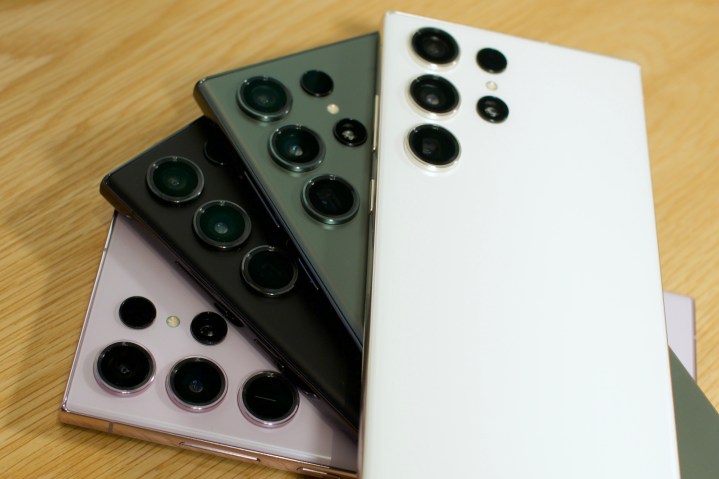
The Galaxy S23 is no slouch, and it’s a good option for those looking for a smartphone with both power and pocketability. You’re getting the same cutting-edge Qualcomm Snapdragon 8 Gen 2 chip found in the Galaxy S23 Ultra, the same version of Android — and the same update promises — plus a great AMOLED screen and a very capable camera system. The only real knock against the Galaxy S23 is the more limited battery life, but that’s just the laws of physics and chemistry at work; a smaller phone means a smaller battery.
Ultimately, though, there’s no question that the Samsung Galaxy S23 Ultra is the most powerful and capable smartphone in Samsung’s new lineup. It has the best cameras by a long shot, support for Samsung’s S Pen, and significantly better battery life than the smaller Galaxy S23. The Ultra is still the most multipurpose smartphone you can get — it does a lot and excels at nearly all of it. Best of all, it packs in enough leading-edge technology and performance that it could easily be the only smartphone you’ll need for years to come. That makes the higher price tag much easier to swallow and helps justify splurging a bit on the higher-capacity models, which will also give you 12GB of RAM for peak performance.








